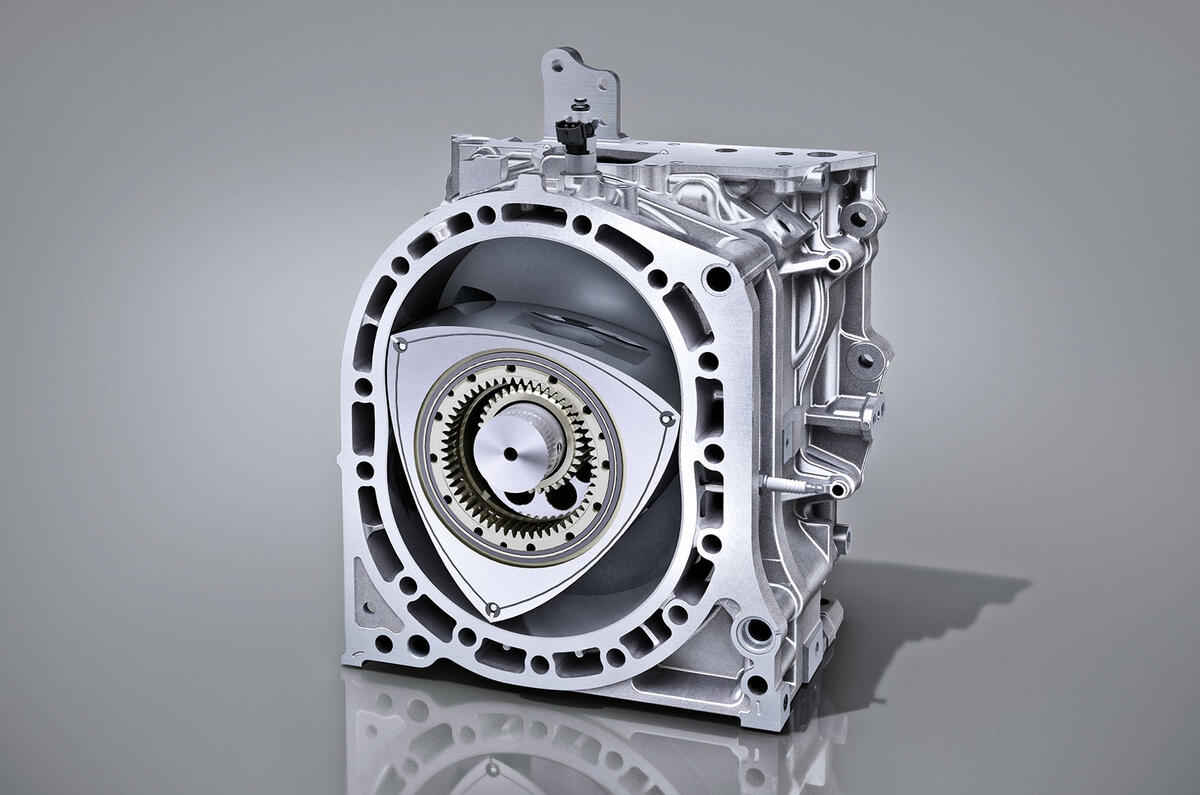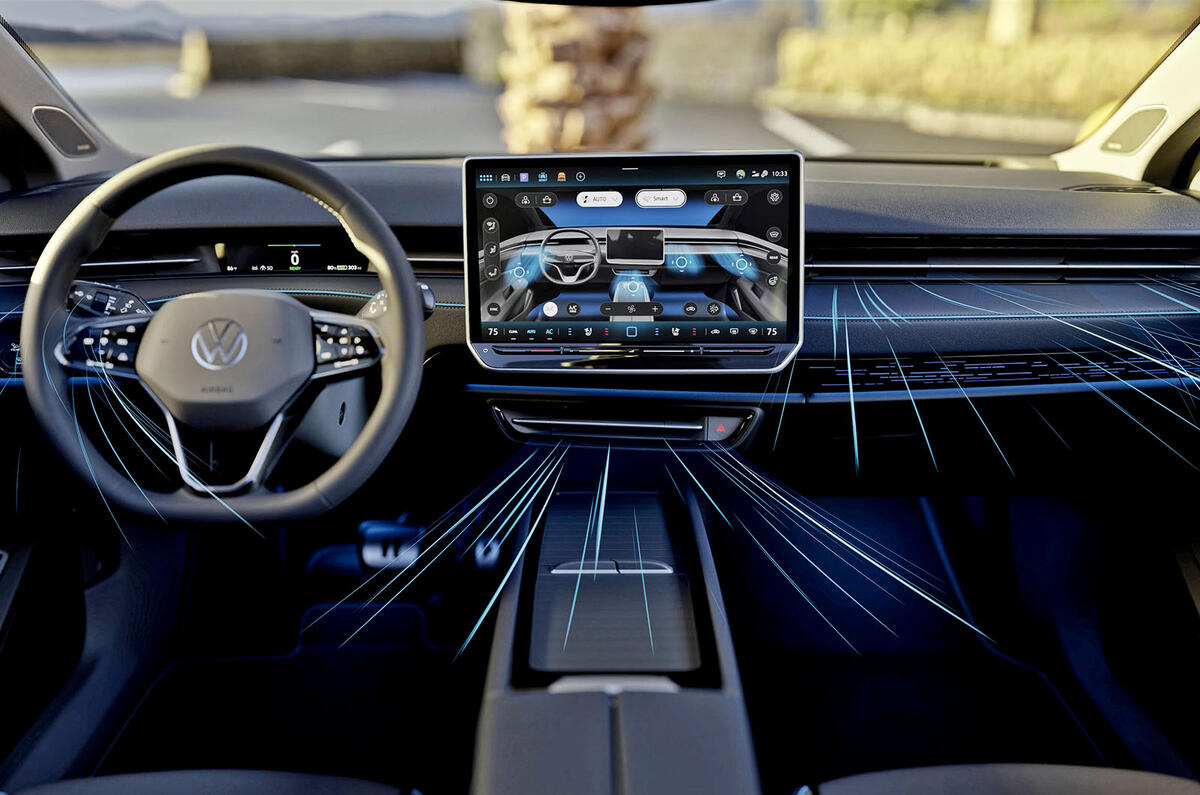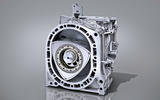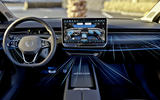The new Mazda MX-30 e-Skyactiv R-EV series plug-in hybrid will be the first of its kind to enter production using a rotary engine to drive the generator.
Manufacturers started tinkering with range-extended EVs way back in the dark ages (it’s a relative term). Some early creations were pretty clunky and a product of the technology available at the time.
Unsurprisingly, given its predilection for quirky cars, Citroën was all over the idea. In the late 1990s, it rolled out the experimental Saxo Dynavolt with NiCad batteries topped up by a 200cc two-stroke twin. That was followed a year or so later by the Berlingo Dynavolt with a NiCad battery pack giving a range of 60 miles backed up by a 500cc twincylinder Lombardini four-stroke engine.
Unlike classic range extenders, the power it made was fed straight to the electric drive motor, the idea being that the vehicle would return to base at night with the battery flat and ready for an overnight plug-in charge. Many similar ideas have popped up since, including Jaguar’s Limo Green, an executive take on the same concept using a Lotus-developed range-extender unit (twin cylinders with an integrated generator).
So twin-cylinder engines seemed to be ‘the thing’ for range extenders – until Audi showed the fruits of the A1 E-tron programme in 2010. The electric Audi A1 was powered by a 12kWh lithium ion battery pack supported by a 254cc rotary engine that operated at a steady 5000rpm driving a 15kW generator when needed and fitted perfectly into the existing spare wheel well.
It was a simply beautiful little thing to drive, the engine was almost completely silent and, starting fully charged, the car could travel almost 150 miles on 12 litres of petrol (which was the size of the fuel tank). All of which bodes well for Mazda’s R-EV with its 8C, 830cc single-disc rotary engine doing much the same as the A1’s smaller unit but from the front, not the rear, of the car.
The engine is fairly small still, with a 120mm rotor radius and an overall width of 840mm. Range from the 17.8kWh battery is 53 miles and electric drive power is 168bhp, with 192lb ft of torque. Mazda’s rotary engines have been criticised in the past for lacklustre torque, heavier fuel consumption and greater challenges in controlling emissions. But disconnected completely from the mechanical drivetrain, as this one now is, could it have finally found its ideal role?
The 8C is direct fuel injected for the first time, has a higher compression ratio of 11.9:1 and wider rotor seals (from 2mm to 2.5mm) and doesn’t have to make the transient response to the driver’s throttle input. Unlike the A1 E-tron, the engine doesn’t quite run at a steady RPM but increases and decreases revs within a 2000-4500rpm operating window. This is to create a more direct correlation between the engine note and the driving experience.
Where it will also score is in the inherent smoothness that the complete lack of reciprocating parts gives, potentially making it the perfect hybrid power unit.
Why Volkswagen’s ID 7 is reinventing the air vent
From heating to heating and air conditioning to climate control and now to smart air conditioning. It was probably inevitable that someone would reinvent the air vent, and the Volkswagen ID 7 promises to be the first across the line. Among other smart features, including noting the position of the sun, the ID 7’s climate control will get smart air vents that will direct air flow dynamically and horizontally to give the best effect.







Join the debate
Add your comment
I am making a real GOOD MONEY ($550 to $750 / hr) online from my laptop. Last month I GOT chek of nearly 85000$, this online work is simple and straightforward, a4 don’t have to go OFFICE, Its home online job. You become independent after joining this JOB. I really thanks to my FRIEND who refer me this SITE…..,
>>>>>>> www.jobsrevenue.com
BMW dropped the idea for a good reason several years, people didn't want the extra expense and inefficiently. Having 2 engines can only be a step backwards, it's like having a petrol engine in the front of the car for city driving then switching to diesel engine in the boot for motorways.
Big, very complicated, expensive, still fossil fuel driven with all the associated killer fumes. And all at a time when battery tech is improving and getting cheaper.
But having said that Mazda have been clever in pricing it at the same price as bigger battery version, so is all that extra work and complexity of having an ICE equivalent to 17kw of battery, emmm I'd be surprized if they make a penny compared the bev version.
From memory I think BMW charged several grand extra for REX version
Agreed xxxx, this is no more an answer than EV's are.
This is probably an ideal application for this type of engine but have there been any innovations to solve the past heavy oil consumption and longevity problems with the rotor seals?